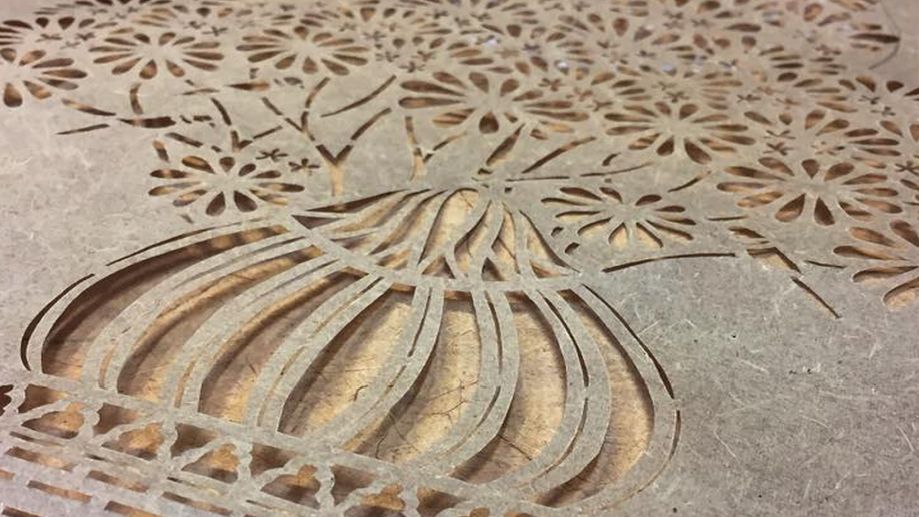As it stands today, the art of hand or stencil cutting designs on paper or Sanjhi, as it is known, is a typical art of Mathura, the land of Krishna, in Uttar Pradesh.
The word "Sanjhi" comes from the Hindi term "Sanjh" or "Sandhya" meaning dusk, regarded to be the time suitable for creative pursuits.
Sanjhi depicts Indian mythological stories in numerous forms. Vaishnava temples show glimpses of such a folk art and reveal that it was practised there as far back as the 15th and 16th centuries.
Advertisement
Later it became an advanced form of art by the Brahmin priests. But over time, the use of Sanjhi declined steadily and the numbers of artisans practising the craft were reduced to just a few families. Radha, Krishna's consort is said to have made Rangolis with natural colours, stones of different colours, flowers and leaves to make such designs to attract Krishna.
In imitation the other Gopis also began making complex patterns with various material to impress Krishna, which later in the Mughal period, began to appear as rich lattice designs.
There was a time when this art prevailed in Madhya Pradesh, Gujarat and Rajasthan, but eventually got restricted to Mathura or "Vraja", the land of Krishna. The pattern is first made on paper to create aSanjhi. The sheets are joined together with glue or pins for expansions when required.
The cutting is done with very fine scissors, slightly curved to ensure meticulous cutting. The paper is turned around while cutting in order to get the design intact. When not in use the blades of the scissors are wrapped with a cloth for protection and a mark of reverence for the device.
After cutting is complete, the papers are folded at the corners to facilitate lifting for removal after colour has been applied by placing the sheets on a wide plain surface and the cut out areas, filled by different colours as in a stencil. The papers can and are then used as wall art, chandeliers and lamps shades for decorative lights. Sanjhi is done as a ritual in veneration of Krishna.
The artists begin work after offering prayers to their respective tools, deities and gurus who have teach them the art. The art pieces depict various Havelis, Jharokhas, Peacocks, Deities, Krishna Leelas and abstract concepts. This intriguing art and its craft is associated with the ancient Vaishnavite cult and dates back centuries to trellised planes, or the jalis, that are the core of Vaishnavite temples in Gujrat and Rajasthan.
During the Bhadrapad season,the temple floor in front of Krishna, started with placing of Banana leaves cut into various shapes and sizes that evolved into stencils with floral and geometric designs. Delhi Crafts Council has been involved in reviving this dying art for more than three decades with an exhibition called Kagaz in Delhi in 1990, giving visibility to the craft, and another in 2015, exploring the possibilities of using Sanjhiin contemporary interiors.
Sanjhi Revisited is a five-day exhibition on at Visual Art Gallery, India Habitat Centre, conceptualised and curated by the Delhi Crafts Council as one of the special events marking its Golden Jubilee this year
Advertisement











